Shy Child vs. Autism


Introduction to Recognizing Distinct Child Behaviors
Parents, educators, and caregivers often face challenges in differentiating between shy behavior and signs of autism in children. While both can involve social hesitation and avoidance, subtle differences in behavioral patterns, communication, and responses to stimuli are crucial for accurate understanding and intervention. This article explores the key distinctions, signs to look for, and effective strategies to support children based on their specific needs.
Defining Shyness and Autism in the Context of Childhood Development
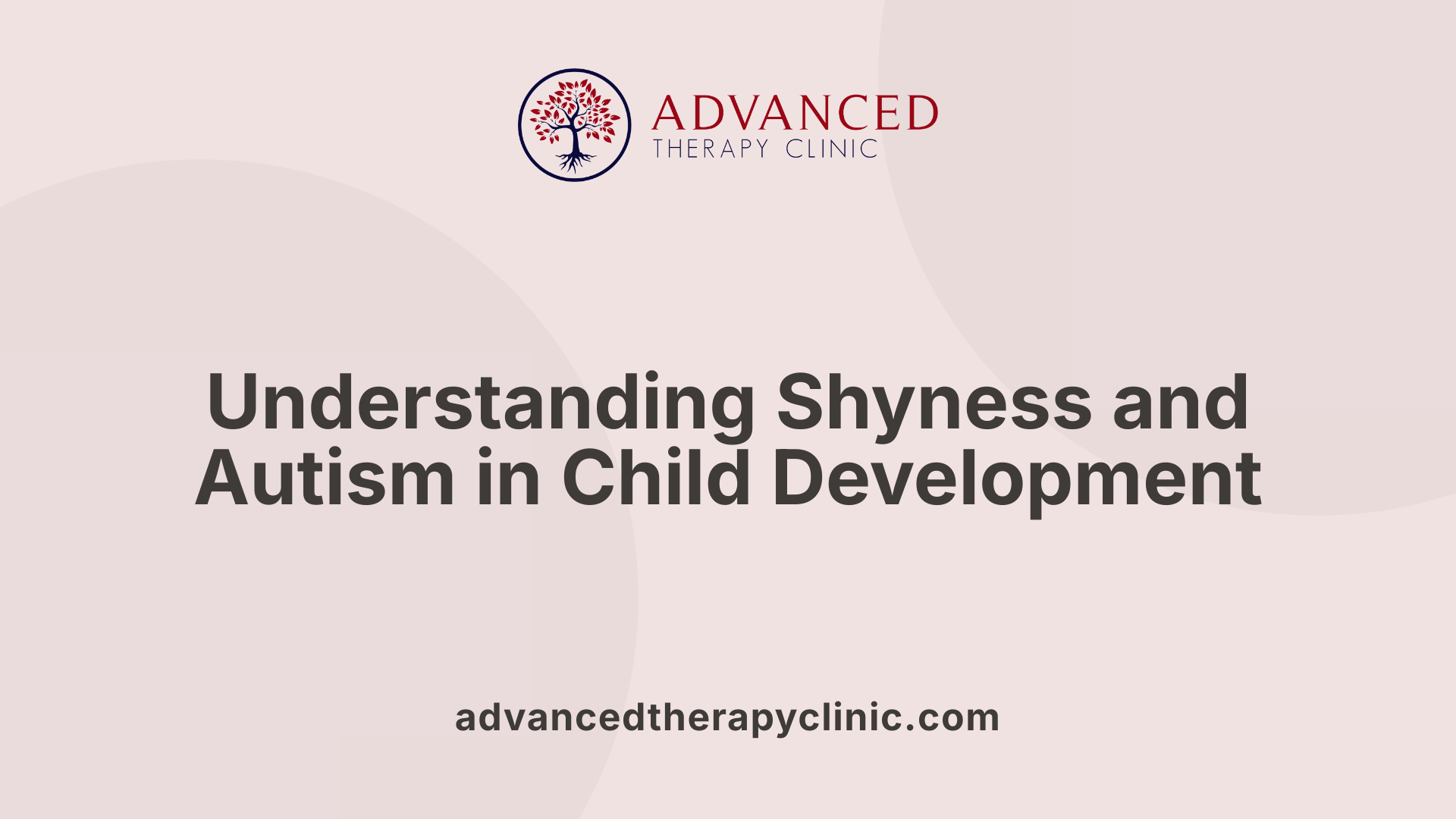
What is shyness as a personality trait?
Shyness is a common personality trait characterized by feelings of apprehension, self-consciousness, and discomfort in social situations. Children who are shy may avoid eye contact, speak softly, or hide behind parents. These behaviors are usually temporary and tend to improve as children gain confidence through social experiences and encouragement.
Support strategies such as gradual exposure to new social settings and creating a supportive environment can help shy children become more comfortable over time. Shyness often diminishes with age, and most shy children eventually enjoy social interactions and communicate effectively once they feel safe.
How is autism classified as a neurodevelopmental disorder?
Autism Spectrum Disorder (ASD) is a lifelong neurodevelopmental condition that affects how children communicate, interpret social cues, and behave. Symptoms often appear early in childhood and persist across different situations. Children with autism typically experience ongoing challenges with social interaction, communication, and exhibit repetitive behaviors and routines.
Autistic children may show sensitivities to sensory stimuli like noises or smells, and they might prefer solitary play over social activities. Unlike shyness, these traits are consistent and significantly impact daily functioning.
What are the distinct behaviors of shy children?
Shy children normally seek social engagement and can warm up to social activities with patience and support. They might avoid eye contact or fidget when uncomfortable but generally understand social cues and communicate effectively when they feel secure.
They often need time to build trust and become more socially involved. Their behaviors are typically situational and directly related to feelings of self-consciousness or anxiety, which can improve as they develop coping skills.
What are the core signs of autism spectrum disorder?
Children with autism show a range of specific behaviors that set them apart from shy children. These include:
| Behavior/Characteristic | Explanation | Additional Details |
|---|---|---|
| Repetitive actions | Hand flapping, lining up toys, strict routines | Help manage sensory overloads, often reinforcing the need for predictability |
| Delayed or atypical speech | Repetition of words or phrases, delayed language milestones | Speech development can be impaired or absent in some cases |
| Difficulty with social cues | Not understanding or responding to eye contact, gestures | May not seek support from caregivers in unfamiliar settings |
| Sensory sensitivities | Overreaction to noises, textures, smells | Thresholds vary, often requiring sensory regulation strategies |
| Lack of imaginative play | Limited pretend play or engaging in parallel play | Often isolated or detached from typical play behaviors |
How can early differences be assessed?
Parents and caregivers should monitor developmental milestones, especially regarding communication, social interaction, and behavior patterns. Persistent avoidance of social interactions, difficulty understanding social cues, regression in language, or sensory sensitivities should prompt professional evaluation.
Evaluation tools like the M-CHAT, ADOS, and comprehensive assessments by pediatricians, psychologist and speech therapists can assist in distinguishing between shyness and autism. Early diagnosis ensures access to targeted therapies that can improve social skills and communication.
| Diagnostic Focus | Typical Behaviors | Differentiating Points | Medical Tools |
|---|---|---|---|
| Social interaction | Shy children seek but hesitate | Autism children often avoid completely | M-CHAT, ADOS |
| Communication | Shy children improve with support | Autism involves delayed or atypical speech | Speech assessments |
| Repetitive behaviors | Typically absent in shyness | Present and often intense in autism | Behavioral scales |
Understanding these differences allows parents, healthcare professionals, and educators to better support children based on their specific needs.
Recognizing Behavioral Signs that Differentiate Shyness from Autism
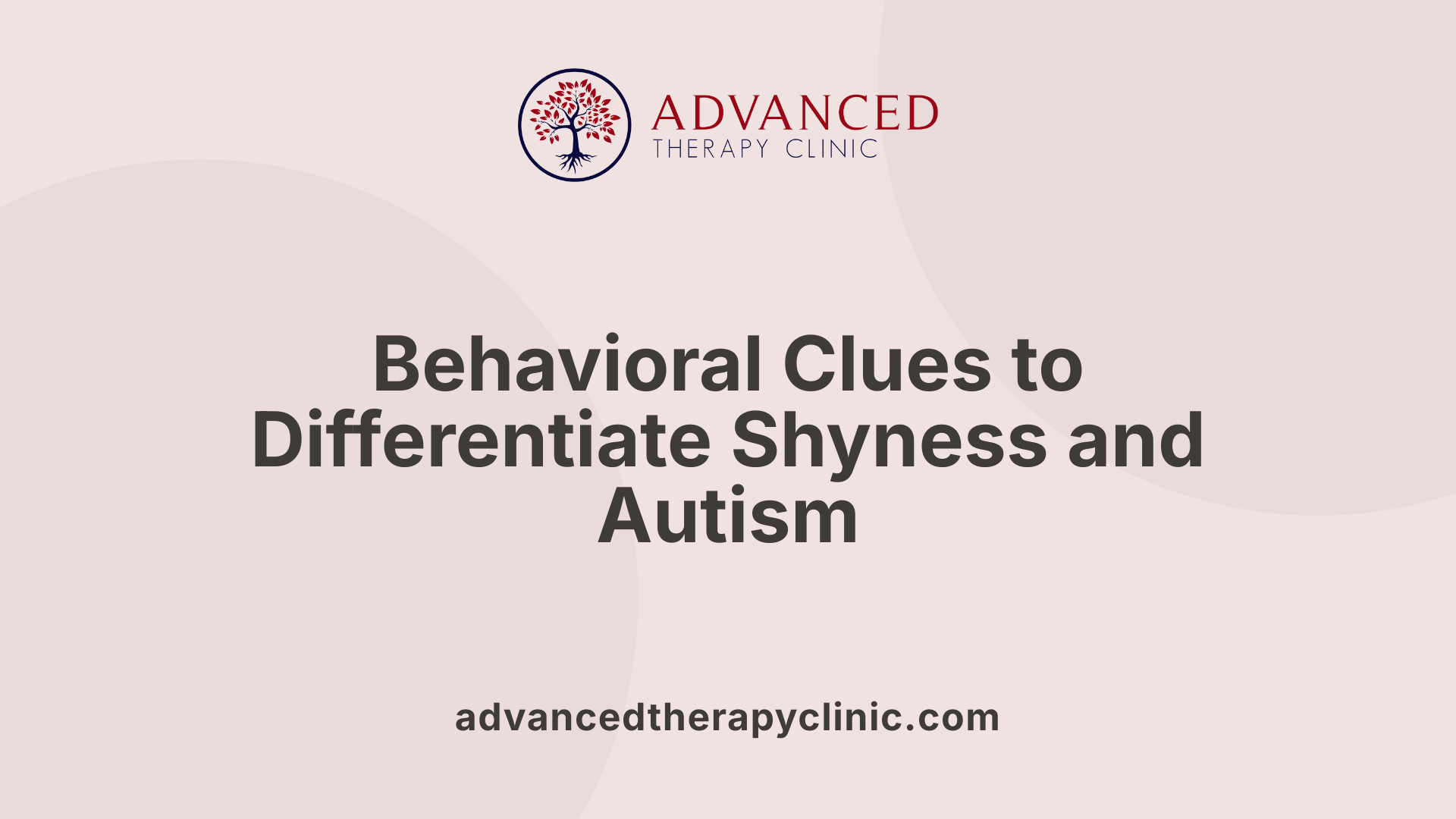
What behavioral signs can help differentiate a shy child from a child with autism?
Shyness and autism can sometimes look similar at first glance, especially since both may involve some avoidance of social interactions and minimal eye contact. However, there are distinctive signs that can help tell these conditions apart.
Shyness is a temporary personality trait. Shy children often feel nervous or self-conscious in new settings, which can lead to behaviors like blushing, sweating, or speaking softly. They usually seek support from parents or caregivers and tend to warm up when they become more comfortable in familiar environments.
In contrast, children with autism display persistent difficulties in social understanding and communication. They often do not respond to social cues like pointing or waving and may avoid eye contact consistently across situations. Repetitive behaviors such as lining up toys, flapping hands, or strict routines are common in autism and serve to manage sensory overload or reduce anxiety.
Speech and language development also differ. Shy children typically understand language well and can communicate effectively once they feel secure. Autistic children might experience delays in speech, use repetitive phrases, or be nonverbal.
Even though both groups might prefer solitary activities or seem withdrawn, autistic children are often overwhelmed despite initial hesitations. They may become distressed with routines that others find mundane or become overly sensitive to noises or smells.
Ultimately, distinguishing between shyness and autism involves careful observation over time. Professionals use specific screening tools and behavioral assessments to identify the underlying reasons for a child's social behaviors and recommend tailored support and therapies. Early and accurate diagnosis is vital to help each child develop social skills and reach their full potential.
Early Signs and How to Identify Autism Versus Shyness
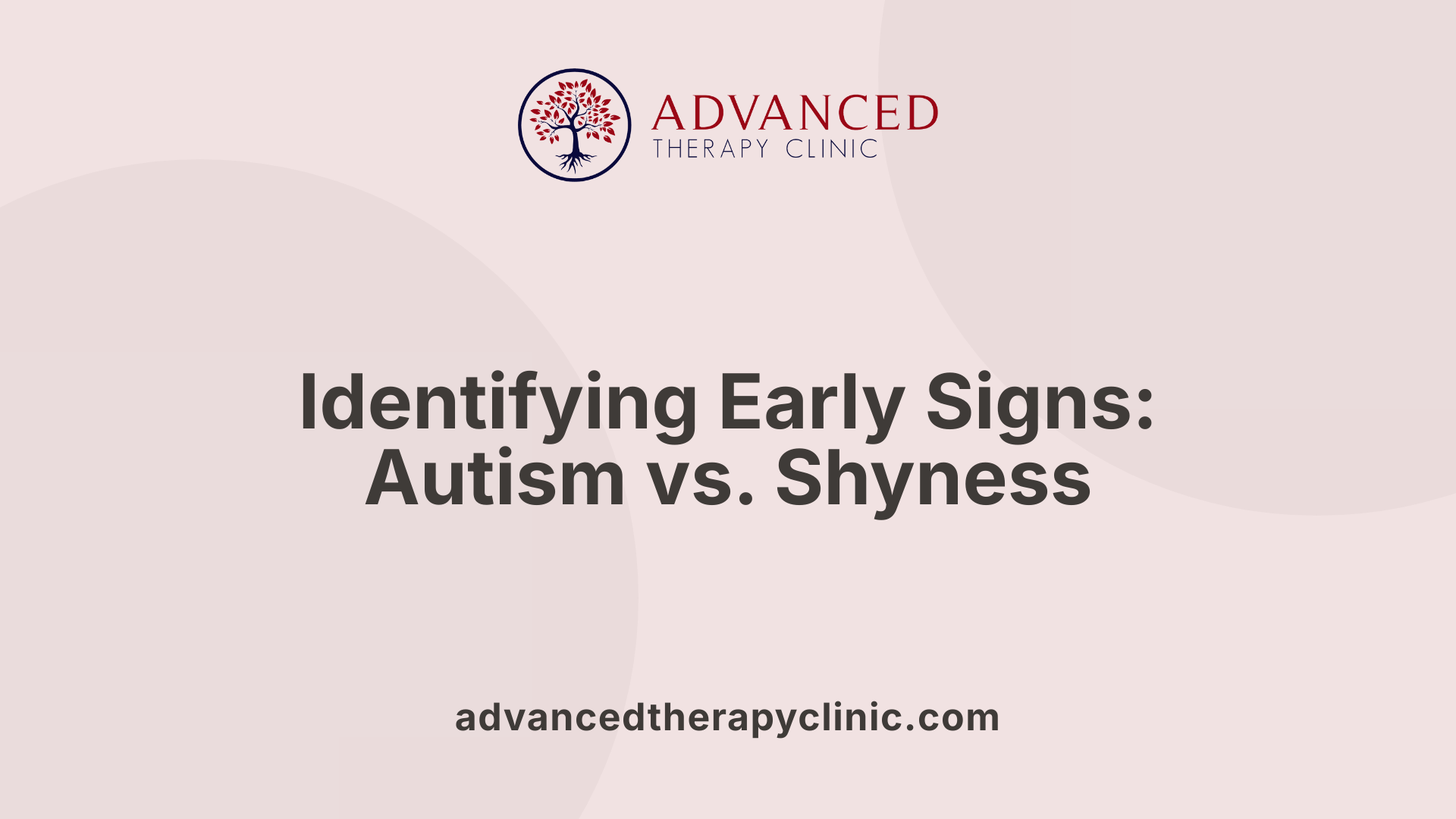
How can parents and caregivers identify early signs of autism as opposed to shyness?
Recognizing the difference between autism and shyness early in a child's development hinges on observing specific behaviors and developmental patterns.
Children with autism often display persistent social and communication challenges. For instance, they may avoid eye contact across multiple settings and struggle to respond when called by their name. They might also exhibit repetitive behaviors, such as lining up toys or hand-flapping, and demonstrate sensory sensitivities, such as distress from certain noises, smells, or textures.
In contrast, shy children typically respond to social cues in familiar environments with appropriate behavior. They may not join social activities initially but usually warm up with time, seek comfort from caregivers, and develop social skills as they gain confidence. Importantly, shy children generally do not experience delays in language or show repetitive behaviors.
Developmental milestones play a crucial role in assessment. Regressions in language or social skills, limited interest in peer interactions, and a lack of spontaneous communication are red flags for autism.
If a caregiver notices that a child consistently avoids eye contact, shows little interest in social play, or exhibits unusual sensory-related responses despite being comfortable in familiar settings, it’s advisable to seek professional evaluation.
Early diagnosis often involves monitoring milestones and using screening tools like the M-CHAT or ADOS. Seeking assessment from specialists such as pediatricians, child psychologists, or speech therapists can ensure timely intervention, which can lead to improved developmental outcomes.
Support Strategies for Children Exhibiting Shyness or Autism
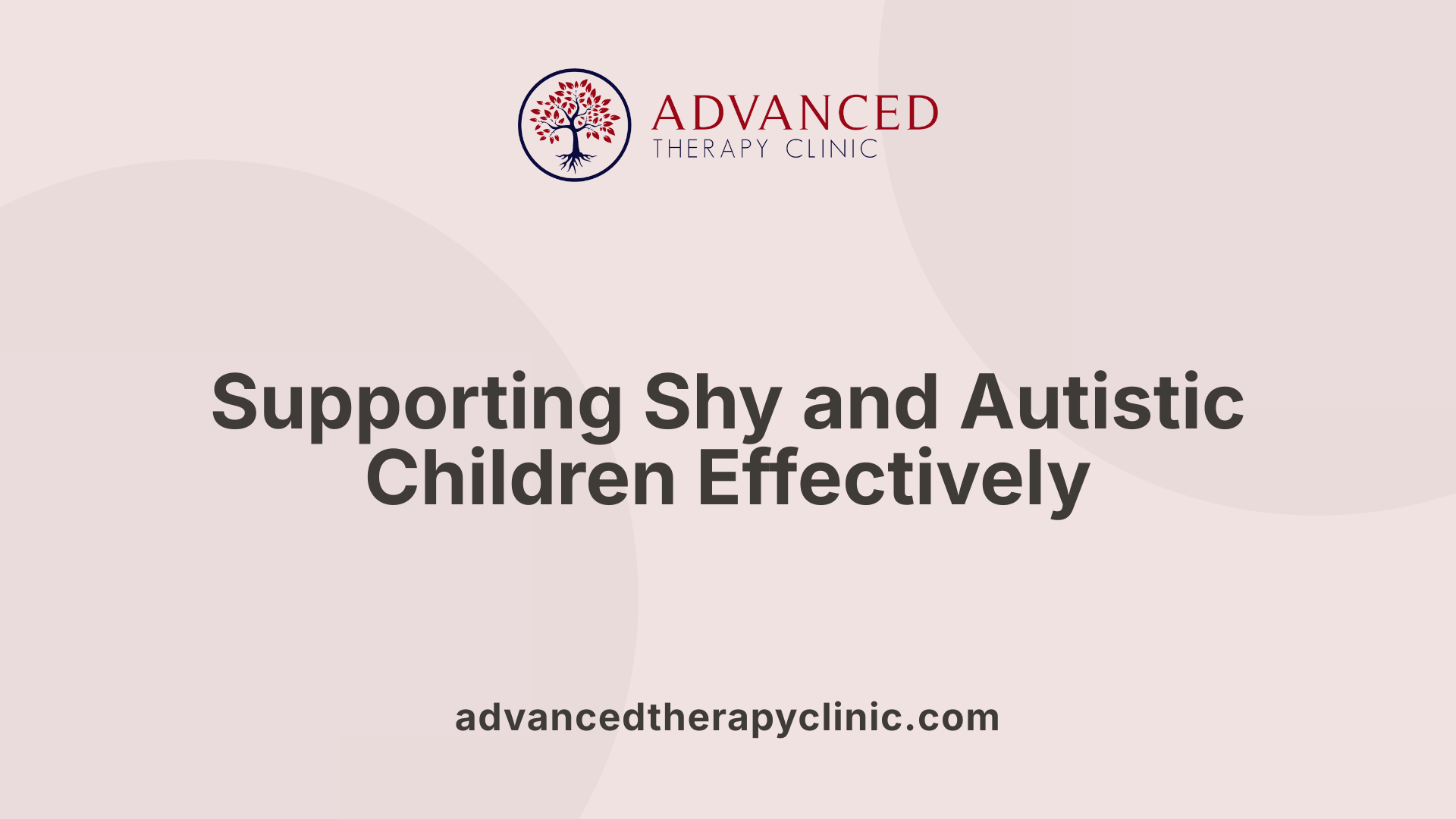
What strategies can support children exhibiting shyness or signs of autism?
Supporting children who display signs of shyness or autism requires approaches that are sensitive to their unique needs and developmental stages. For shy children, creating a familiar and predictable environment helps reduce anxiety and builds confidence. Reassurance from caregivers, along with gentle encouragement, allows children to gradually engage in social situations without feeling overwhelmed.
Children with autism often benefit most from structured settings that provide consistency and clear routines. Early intervention programs, such as Applied Behavioral Analysis (ABA) therapy, can significantly improve their communication and social interaction skills. Therapeutic activities tailored to individual needs, including social skills training, help children understand social cues and develop appropriate responses.
Utilizing visual supports and social stories is effective across both groups. Visual aids such as picture schedules or social stories like StoryCarnival can clarify expectations and prepare children for new social experiences. Role-playing and play activities also serve as valuable tools in practicing social skills in a fun, non-threatening way.
Patience and positive reinforcement are vital components. Caregivers should model calm, respectful behavior and celebrate small successes to motivate progress. For children who are shy, this approach fosters confidence, while children with autism learn to associate positive feelings with social interaction.
By combining these strategies—gradual exposure, structured environments, visual supports, and patience—parents and educators can create supportive spaces where children feel safe to develop their social and communication skills, making social engagement a more positive experience for them.
Interpreting Social Interactions, Communication, and Routines
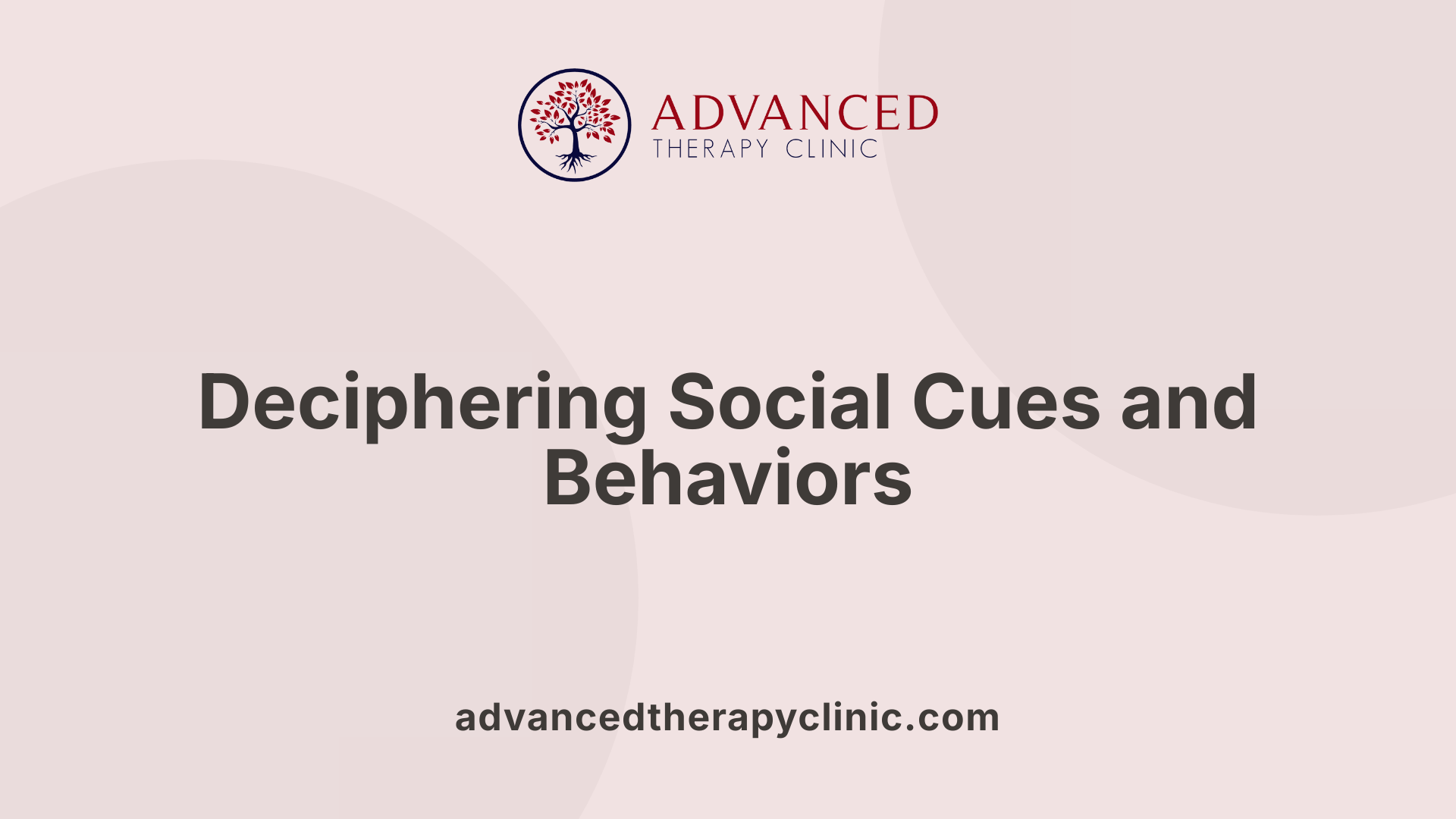 When trying to tell apart shyness from autism, careful observation over time is essential.
When trying to tell apart shyness from autism, careful observation over time is essential.
Start by watching how the child interacts socially. Shy children tend to be hesitant initially but often warm up once they feel comfortable, show understanding of social cues, and seek social engagement when encouraged. In contrast, children with autism may consistently avoid eye contact, not respond to their name, and struggle to interpret social cues like facial expressions or body language.
Communication patterns are also revealing. Shy children might speak softly or occasionally hold back, but generally understand and use language effectively. Children with autism, however, may have delayed speech development, use repetitive phrases, or be nonverbal. They also might display unusual speech rhythms or pitch.
Sensory sensitivities are another distinguishing feature. Children with autism might be sensitive to certain noises, lights, or textures, showing signs like covering ears, avoiding certain environments, or becoming distressed. Shy children usually do not have such aversions; their discomfort stems more from social anxiety.
Repetitive behaviors and strict routines are hallmark signs of autism. These can include lining up toys, hand-flapping, or insisting on sameness, and they tend to persist over time. Shy children do not generally engage in such repetitive actions but may prefer familiar routines for comfort.
Reviewing the child's developmental history provides further clues. Early signs of autism include limited or no babbling, lack of response to social stimuli, and engagement in unusual behaviors from infancy. Shyness often appears later, influenced by personality, and tends to improve with age and social experience.
By observing these aspects consistently and incorporating knowledge of the child’s developmental milestones, parents and caregivers can better understand whether a child's behaviors are due to shyness or possibly indicative of autism. In case of uncertainty, consulting professionals for comprehensive assessments remains the best approach.
Key Takeaways and the Importance of Professional Support
Differentiating between shyness and autism involves careful, ongoing observation of behaviors across different settings and understanding developmental milestones. While shy children often show temporary social hesitation that improves with age and support, children with autism display persistent, comprehensive challenges that affect communication, behavior, and sensory processing. Early diagnosis and professional assessments are vital in developing effective interventions tailored to each child's needs. Parents, educators, and caregivers play a crucial role in fostering supportive environments—whether by easing social exposure for shy children or implementing structured, autism-specific therapies. Recognizing these differences early ensures children receive the appropriate support, enhancing their social, emotional, and developmental well-being.
References
- Is My Child Shy or Is It a Sign of Autism? - Scope Au
- Shy vs Autism: Key Differences to Understand for Better Support
- Shy or Autistic: Understanding the Contrasts | All Star ABA
- Shyness and Autism: Know the Difference
- Shy Child vs. Autism - Goally
- Shy Child vs. Autism [The Main Difference Between Them]
- Shyness or Autism: Identifying the Telltale Signs in Children
- Shy or Autistic: What's the Difference? | True Progress Therapy
Recent articles
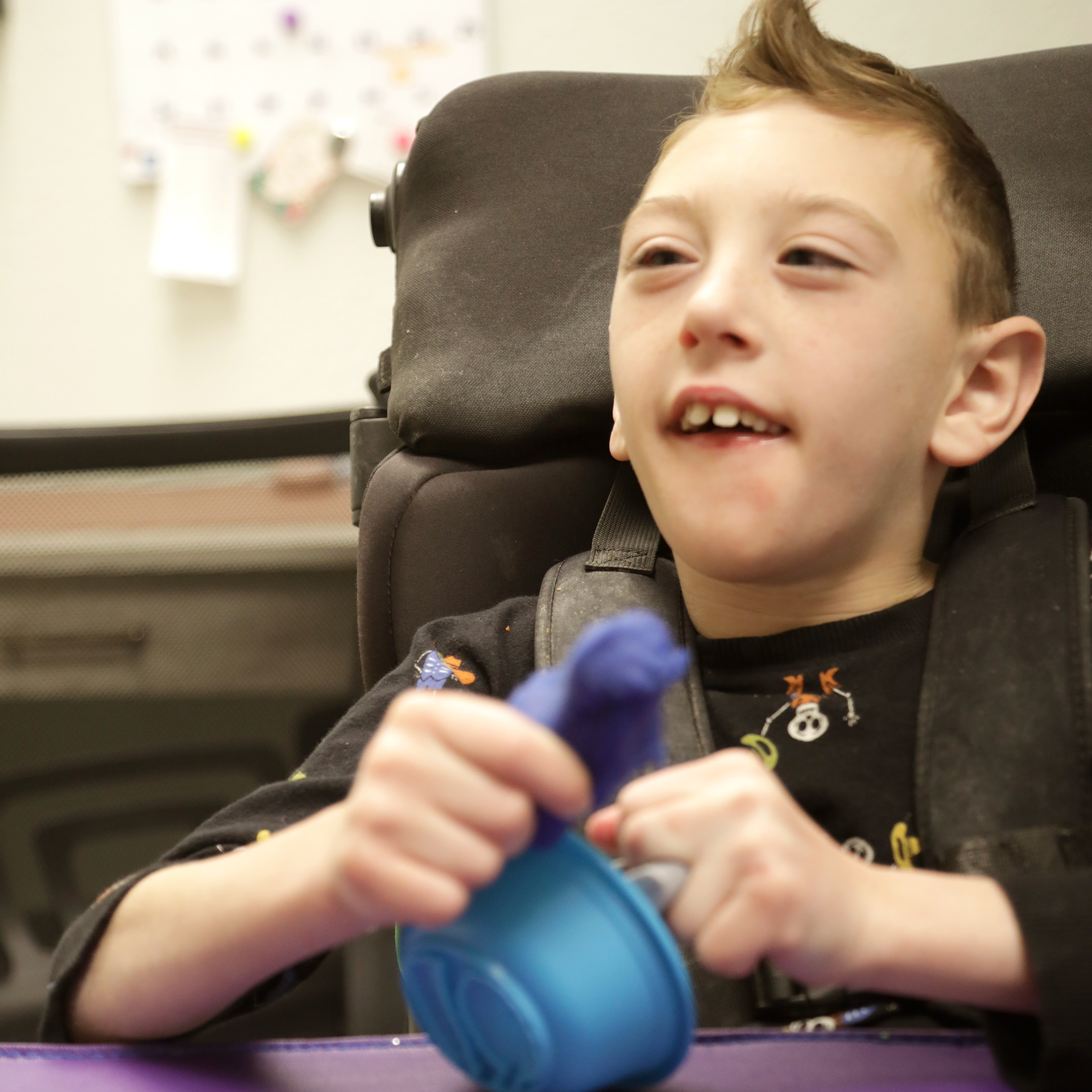
How Pediatric Therapy Helps Kids Thrive across Montana and Wyoming
A supportive guide for families exploring therapy options in Billings, Butte, Missoula or Sheridan.

How to Choose the Right Pediatric Therapy Clinic in Billings, Montana
A Parent‑Friendly Guide To Finding The Best Support For Your Child
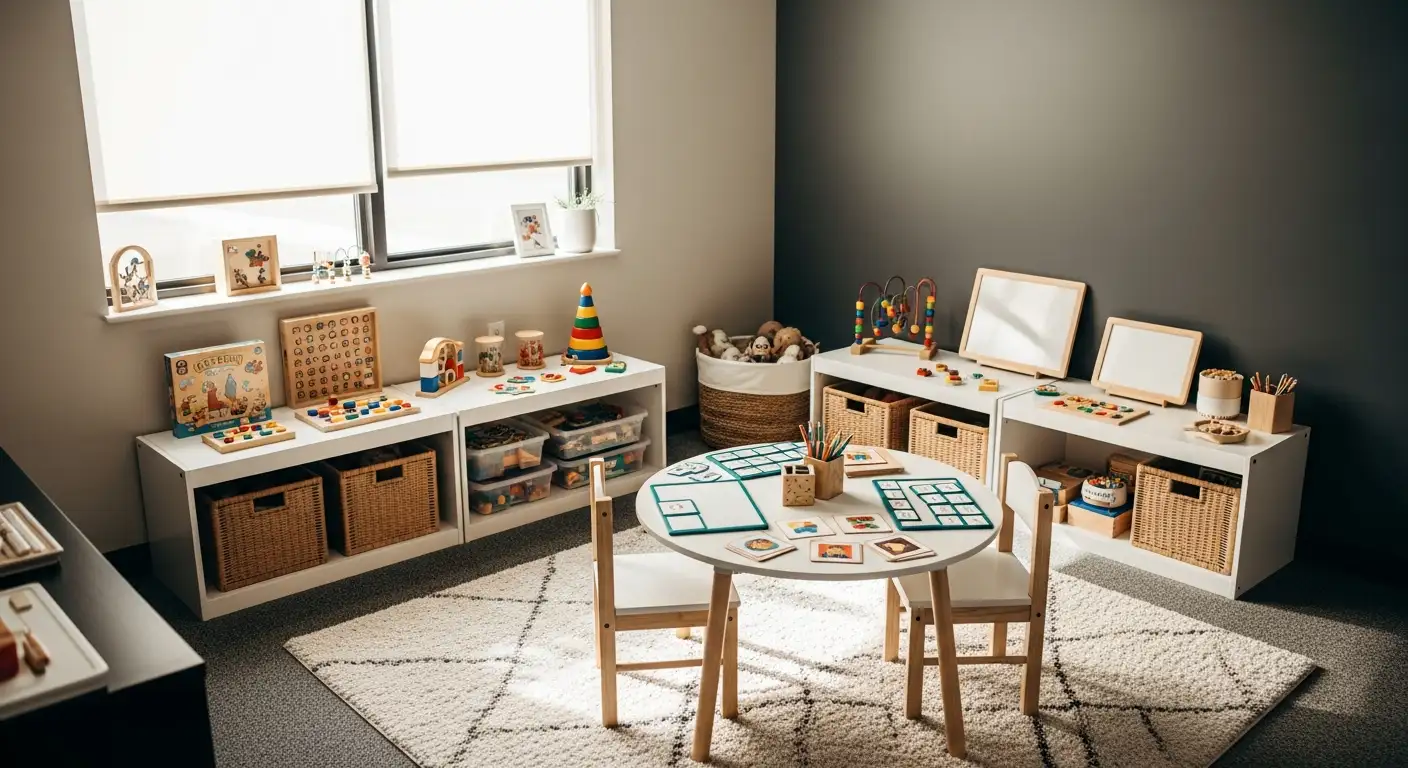
Expressive Speech Delay 2-Year-Old
Understanding and Addressing Expressive Speech Delay in Toddlers

How Speech Recognition Works
Unlocking the Power of Speech Recognition in Therapy and Healthcare

Autism and Head Size
Understanding the Complex Relationship Between Autism and Head Size
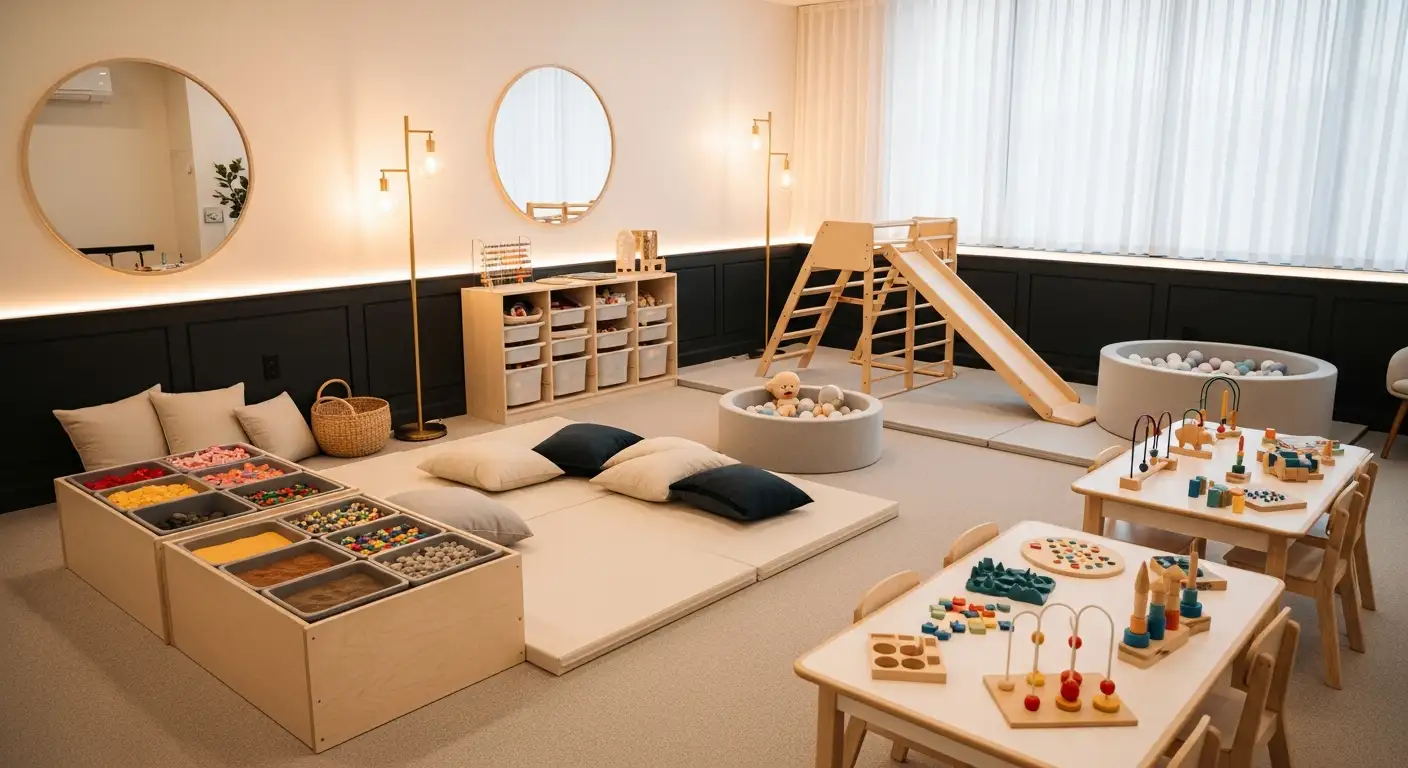
Occupational Therapy in Autism
Enhancing Independence and Quality of Life Through Occupational Therapy in Autism

